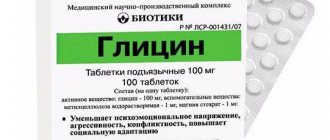Causes of heartburn during pregnancy
There is an opinion that heartburn in an expectant mother is caused by hair growth in the fetus. But gastrologists have their own opinion on this matter. From a medical point of view, the feeling of bursting warmth and burning behind the sternum, which appears in a pregnant woman after eating, is provoked by hydrochloric acid, which predominates in the gastric juice. After eating, hydrochloric acid penetrates the lower esophagus, and sometimes higher. This process during pregnancy can be caused by two reasons or both at once. The first reason is that due to the growing fetus, the uterus enlarges and moves upward, which leads to compression of the diaphragm. In turn, the diaphragm puts pressure on the stomach, and this leads to a decrease in its volume. During eating, the stomach becomes full, and excess semi-digested food is thrown into the esophagus.
The second reason is this: During pregnancy, progesterone levels increase, which leads to decreased muscle tension. This is necessary for the normal development of pregnancy, but at the same time other muscle complexes in the body relax. For example, the pylorus of the stomach, called in medicine the sphincter, whose task is to pass food into the stomach and protect it from being released back into the esophagus. In a normal state, when vomiting, a person manages to open the sphincter in the opposite direction through excessive efforts. But during pregnancy, due to relaxed muscles of the pylorus, a woman experiences heartburn.
Almagel for heartburn during pregnancy
To avoid heartburn during pregnancy, you should not overfill your stomach. You need to eat more often, but less. After eating, you don't need to go to bed right away. It’s better to sit quietly at a table for 15–20 minutes or take a walk in the fresh air. It is necessary to exclude sour, peppery, fatty and fried foods from a pregnant woman’s diet; this will significantly reduce the risk of heartburn.
If heartburn still makes itself felt, then to get rid of it you should take Tva - antacids, which are not contraindicated during pregnancy. These drugs can neutralize hydrochloric acid. Antacids are divided into: absorbable and non-absorbable. Pregnant women are prescribed exclusively non-absorbable antacids, which should be taken in the dosage prescribed by the doctor. These drugs include Almagel.
How to take Almagel during pregnancy and breastfeeding?
During pregnancy, Almagel is used not only to get rid of heartburn. The drug is also taken for flatulence and when heartburn manifests itself as a consequence of early or late toxicosis.
Doctors recommend that pregnant women take Almagel for no more than three days. This drug is generally safe, but it has side effects such as constipation. And if we take into account that pregnant women already have a fairly high risk of this problem, it becomes clear that there is no need to abuse Almagel and it should be taken only in extreme cases and as prescribed by a doctor.
It is not recommended to take Almagel while breastfeeding.
Medicines while breastfeeding
It is not recommended to take most medications while breastfeeding. This is primarily due to the lack of relevant research. There is a small list of studied medications that can be used while breastfeeding. Most of these medications do pass into breast milk, so they should be used with caution during breastfeeding (i.e. strictly according to indications, not exceeding the dose and monitoring the baby’s condition).
In case of a pronounced negative effect on the child’s body, the medicine is considered contraindicated during breastfeeding. How does the medicine affect the child’s body?
The degree of adverse effect of the drug on the newborn’s body is determined by the following factors: 1) toxicity of the drug; 2) the true amount of medicine entering the child’s body; 3) the peculiarity of the drug’s effect on the child’s immature organs; 4) the duration of removal of the medicine from the child’s body; 5) the duration of the medication taken by the nursing mother; 6) the child’s individual sensitivity to this drug; 7) the risk of developing allergic reactions. Of the most commonly used drugs, most are not very toxic drugs that cause significant toxic effects on organs and tissues. It is therefore believed that in many cases breastfeeding can be continued with medical treatment. If a woman combines breastfeeding and treatment, then choosing the optimal schedule for alternating the drug and feedings may be useful. It is necessary to take the medicine in such a way that the feeding time does not fall during the period of its maximum concentration in the blood. When using a medicine, a woman during breastfeeding should be aware that the side effects caused by this drug can also occur in the child. If the risk of adverse effects of the medicine on the child’s body is high, then during treatment you should stop breastfeeding, but continue to express milk to maintain lactation. After completing the course of treatment, breastfeeding should be resumed. It is believed that after a course of antibiotics incompatible with breastfeeding, you can breastfeed 24 hours after the last dose of the drug. And when using a number of radioactive agents, the radioactivity of milk can persist from 3 days to 2 weeks.
Almagel®
Oral suspension 10 ml and 170 ml
Compound
5 ml (one scoop) contain
active substances:
aluminum hydroxide gel (15.3% Al(OH)3) 2.18 g (in terms of aluminum oxide (10% Al2O3) 218 mg), magnesium hydroxide paste 350 mg (in terms of magnesium oxide 75 mg)
Excipients:
hydrogen peroxide solution (30%), sorbitol, sodium saccharin, hydroxyethylcellulose, methyl parahydroxybenzoate, propyl parahydroxybenzoate, butyl parahydroxybenzoate, propylene glycol, macragol 4000, lemon oil, ethyl alcohol 96%, purified water.
10 ml (one sachet) contain
active substances:
aluminum hydroxide gel (15.3% Al(OH)3) 4.36 g (in terms of aluminum oxide (10% Al2O3) 436 mg), magnesium hydroxide paste 700 mg (in terms of magnesium oxide 150 mg)
Excipients:
hydrogen peroxide solution (30%), sorbitol, sodium saccharin, hydroxyethylcellulose, methyl parahydroxybenzoate, propyl parahydroxybenzoate, butyl parahydroxybenzoate, propylene glycol, macragol 4000, lemon oil, ethyl alcohol 96%, purified water.
Description
A suspension of white or almost white color with a lemon scent.
When stored on a surface, separation of layers is allowed. By vigorously shaking the contents of the bottle, the homogeneity of the suspension is restored
Pharmacotherapeutic group
Preparations for the treatment of diseases associated with acidity disorders. Antacids. Aluminum preparations. Combination of aluminum preparations.
ATX code: A02AB10
Pharmacological properties
Pharmacokinetics
Aluminum salts are absorbed to a small extent in the intestines.
Magnesium ions are absorbed by approximately 10% and their concentration in the blood remains almost unchanged. The therapeutic effect after taking the drug occurs within 3-5 minutes. The duration of action depends on the rate of gastric emptying. When taken on an empty stomach, it varies from 20 to 70 minutes.
When taken one hour after a meal, the antacid effect can last up to 3 hours. Aluminum hydroxide and magnesium hydroxide neutralize excess hydrochloric acid in the stomach, forming aluminum chloride and magnesium chloride.
Under the influence of the alkaline contents of the intestines, the latter turns into alkaline salts of aluminum and magnesium, which are poorly resorbed and excreted through the gastrointestinal tract.
Pharmacodynamics
Almagel is an antacid drug. Provides long-term local neutralization of continuously separating gastric juice and reduces the high content of hydrochloric acid in it to optimal limits. In addition, it has a carminative, choleretic effect and causes a mild laxative effect.
Aluminum hydroxide suppresses the secretion of pepsin, neutralizes hydrochloric acid, forming aluminum chloride, which in an alkaline environment turns into alkaline aluminum salts. Magnesium hydroxide also neutralizes hydrochloric acid, turning into magnesium chloride, which has a slight laxative effect.
Thus, it counteracts the constipating effect of aluminum hydroxide. Sorbitol, which is part of the drug, has a carminative effect, increases the secretion of bile and exhibits a mild laxative effect, complementing the effect of magnesium hydroxide.
The drug is characterized by a uniform and long-lasting antacid effect without the subsequent formation of carbon dioxide, which in turn causes flatulence, a feeling of heaviness in the epigastric region and a secondary increase in the secretion of hydrochloric acid.
The use of the drug does not lead to electrolyte imbalance, does not cause alkalosis and the formation of stones in the urinary tract. Thanks to its gel structure, the drug forms a protective layer, ensuring uniform distribution of active substances on the gastric mucosa.
Indications for use
-peptic ulcer of the stomach and duodenum in the acute phase
– acute and chronic gastritis
– duodenitis
– enteritis
– hiatal hernia, reflux esophagitis
– discomfort and pain in the epigastrium due to errors in diet, after consumption
coffee, nicotine, alcohol, medicines
– inflammation of the gastric mucosa after surgery
– prevention and treatment of dyspeptic phenomena resulting from
use of non-steroidal anti-inflammatory drugs and
glucocorticosteroids
Directions for use and doses
Inside. The bottle should be shaken before use.
To achieve a protective effect
on the mucous membranes of the upper digestive tract, the drug is taken 10-15 minutes before meals.
For adults –
5 – 10 ml (1-2 measuring spoons or 1 sachet) 3-4 times a day. If necessary, the single dose can be increased to 15 ml (3 scoops).
Children from 15 to 18 years old –
5 ml (1 measuring spoon) 3 times a day.
Children from 10 to 15 years old
Prescribe 1/2 the recommended dose for adults, but not more than 5 ml in a single dose.
You should not drink water for 15 minutes after taking the drug.
After achieving a therapeutic effect, the daily dose is reduced to 5 ml (1 measuring spoon) 3-4 times a day or 1-2 sachets per day. The drug is taken 45-60 minutes after meals and in the evening before bedtime. The duration of treatment should not exceed 15-20 days.
For preventive purposes
when taking medications that irritate the gastrointestinal tract - 5-15 ml (1-3 scoops or 1 sachet) 15 minutes before taking the medication, but not more than 10-12 days.
It is recommended that after taking the drug, lie down and turn over from side to side several times (every 1-2 minutes) (to improve its distribution throughout the gastric mucosa)
Drug interactions
It is recommended to take other medications 1-2 hours before or after taking Almagel®. Almagel reduces the acidity of gastric juice and this can affect the effect of a large number of drugs when taken in combination.
Almagel reduces the therapeutic effect of reserpine, cimetidine, ranitidine, digitalis glycosides, iron salts, lithium preparations, quinidine, mexiletine, phenothiazine drugs, tetracycline antibiotics, ciprofloxacin, isoniazid and ketoconazole.
Almagel reduces the level of gastric secretion and thus may affect the results of a functional study of gastric acidity.
Release form and packaging
170 ml in glass bottles or polyethylene terephthalate bottles.
One bottle, along with a 5 ml dosage spoon and instructions for medical use in the state and Russian languages, is placed in a cardboard box.
10 ml of the drug is placed in multilayer foil bags.
10 or 20 sachets along with instructions for medical use in the state and Russian languages are placed in a cardboard box.
Shelf life
2 years
Do not use after the expiration date stated on the package.
AD, Bulgaria, 5600, Troyan, st. “Krayrechna” No. 1
Registration Certificate Holder
"Balkanfarma - Troyan" AD, Bulgaria
Address of the organization that accepts product quality claims from consumers on the territory of the Republic of Kazakhstan
Representative office of Actavis International Ltd. in Almaty
Republic of Kazakhstan, 050009, Almaty, st. Mukanova, 241, office 1-a.
Tel./fax, 313 74 31, 313 74 32;
Email address; website: www.actavis.com
Source: https://drugs.medelement.com/drug/%D0%B0%D0%BB%D0%BC%D0%B0%D0%B3%D0%B5%D0%BB%D1%8C-%D0% B8%D0%BD%D1%81%D1%82%D1%80%D1%83%D0%BA%D1%86%D0%B8%D1%8F/309624321477650972?instruction_lang=RU
Release form
The drug is available in the form of a suspension and tablets.
Varieties and composition of Almagel:
- Suspensions in a green box. Ingredients: aluminum and magnesium hydroxide, sorbitol, food additive E1525. Preservative E218, propyl hydroxybenzoate, ethylene, etc.
- Suspension in yellow packaging. Ingredients: aluminum hydroxide hydrate, magnesium hydroxide, benzocaine, sorbitol, food additive E1525, etc.
- The drug is designated "Neo". Main components: aluminum hydroxide hydrate, magnesium hydroxide. Additional substances: sorbitol, perhydrol, saccharin, hydroxyethylcellulose, etc.
- The tablets have the following composition: magnesium and aluminum hydroxide, mannitol, microscopic cellulose, sorbitol, magnesium stearate.
The drug has an enveloping absorbent and antacid effect. The main components neutralize the hydrochloric acid produced by the stomach. Active substances reduce the digestive ability of the stomach and prevent the formation of ulcers.
The drug absorbs substances that irritate the mucous membranes of the digestive tract. The active components cover the internal membranes of the gastrointestinal tract with a protective film.
Sorbitol and magnesium hydroxide normalize stool. Increased gas formation and heaviness in the stomach disappear.
The medication is used to treat the following diseases:
- Inflammation of the mucous membranes of the esophagus;
- Peptic ulcer;
- Acute inflammatory damage to the gastric mucosa;
- Inflammation of the walls of the small intestine;
- Inflammation of the inner lining of the duodenum;
- Food bacterial poisoning;
- Increased gas formation.
Almagel is also taken to neutralize stomach pain after excessive consumption of alcohol or tonic (coffee) drinks, or strict diets. Use the drug if abdominal pain is caused by smoking or medications.
Analogues of the drug Almagel
During treatment with Almagel Neo, it is important to remember that after taking the suspension, no other medications should be taken within 2 hours.
When using the suspension simultaneously with tetracycline, indomethacin, aminazine or H2-histamine blockers, the former reduces the therapeutic properties of the listed substances.
Analogues are determined by structure:
- Rivolox.
- Almagel Neo.
- Maalox mini.
- Anacid forte.
- Almagel A.
- Almol.
- Alumag.
- Maalox.
- Ajiflux.
- Gastracid.
Analogues have a similar antacid effect:
- Alfogel.
- Rutacid.
- Milk of magnesia.
- Sodium bicarbonate.
- Aktal.
- Gelusil varnish.
- Daijin.
- Magnistad.
- Alugastrin.
- Gastal.
- Andrews antacid.
- Gestid.
- Simalgel VM.
- Magnatol.
- Tannacomp.
- Magalfil 800.
- Scoralite.
- Talcid.
- Antareit.
- Phosphalugel.
- Tams.
- Anacid forte.
- Gaviscon forte.
- Rennie.
- Becarbon.
- Gastrik.
- Gasterin.
- Relzer.
- Sodium bicarbonate.
- Gaviscon.
- Magnesium oxide.
- Rokzhel.
- Gastroromazole.
- Tisacid.
- Gelusil.
- Gelusil.
- Additive calcium.
- Calcium carbonate.
- Topalkan.
- RioFast.
Dosage
Suspensions in yellow and green packaging are shaken before use and consumed 30 minutes before meals, and a second time before bedtime. There is no need to take the medicine with water. To treat pathologies of the digestive tract, take 5–15 ml three times a day. When the patient’s condition returns to normal, it is recommended to use 5 ml three times a day, the course duration is 8–12 weeks. For prophylaxis, the suspension is taken 5–10 ml once.
Shake Almagel Neo and take 60 minutes after meals; after drinking, do not drink water or other liquids for at least 30 minutes. Dosage for adults – 10 ml four times (take the evening dose before bed, the rest after meals). The maximum daily dose is 60 ml. The therapeutic course lasts 28 days.
The tablet form of Almagel is prescribed in the following dosage - 1-2 tablets six times. If you take the tablets on an empty stomach, the symptoms will disappear after 30 minutes. When taken together with food, the therapeutic effect lasts 3 hours. The course of treatment lasts no longer than 15 days. The tablet form of Almagel is approved for use by children over 12 years of age.
Which type of drug is better?
Almagel is produced in the form of tablets and suspensions. The suspensions are slightly different in composition and are recommended for use for the corresponding symptoms. As a result, it is necessary to determine which type of suspension corresponds to the painful condition. The Almagel suspension contains only the main ingredients - magnesium and aluminum hydroxides.
Almagel A is distinguished by the addition of the anesthetic component benzocaine, Almagel Neo copes well with flatulence with the help of the substance simethicone. To make it easier to distinguish suspensions, each type is packaged in a package of its own color, which includes instructions. The drug in tablets is called Almagel T. For what painful manifestations should each type of medication be taken?
Packaged in a green box. It is considered the most optimal option for use for heartburn. Appointed during:
- treatment of acute or chronic gastritis with normal and high acidity;
- therapy for ulcerative manifestations;
- carrying out preventive measures;
- manifestations of discomfort after an unbalanced meal, abuse of alcoholic beverages.
It has a convenient release form. The product comes with instructions and a measuring spoon. The onset of exposure is no more than 5 minutes after consumption. Almagel belongs to the group of non-absorbable antacids. Classic Almagel is recommended to be taken after finishing a meal, leaving it for an hour or two, and a second time before bedtime.
Available in yellow packaging. It differs from the base drug in the presence of one more component - the anesthetic benzocaine. Recommended for use in the presence of severe pain. It relieves pain well and for a long time. Benzocaine penetrates into the blood in very small doses. The antacid effect of the “yellow” drug is identical to the base drug, but for intense pain in the stomach, ulcerative exacerbations, gastritis during an exacerbation, it is better to take Almagel A.
The product is equipped with a measuring spoon, which protects against overdose. The suspension is prescribed during complex treatment of diabetes mellitus. If the patient has painful symptoms in the abdomen, nausea or vomiting, then Almagel A is used at the beginning of treatment. Only after these signs disappear, one should switch to classic Almagel. Consume after meals in doses prescribed by your doctor.
The medicine is released in red packaging. This type of Almagel suspension will gently and delicately help get rid of dyspeptic symptoms. Especially if they are accompanied by flatulence. This effect is provided by the simethicone (carminative) component in Almagel Neo. Simethicone helps reduce and destroy gas bubbles.
The drug Almagel Neo also effectively relieves heartburn and bloating. It works well and is recommended for use in the presence of fermentative or putrefactive dyspepsia. It relieves symptoms of other diseases of the digestive tract as effectively as other types of Almagel suspension. This type of suspension should be taken an hour after eating.
Almagel Neo contains alcohol, so it should be taken with caution by people with pathological liver function, epilepsy and alcohol dependence. Almagel Neo is prohibited for patients with congenital fructose intolerance. Neo can cause diarrhea and stomach irritation. However, the presence of alcohol in the composition of the medication does not affect the rate of reactions. Therefore, it is allowed to be prescribed to patients whose occupation requires a high reaction rate and good concentration.
Almagel Neo should not be used for more than a month. Otherwise, an overdose is possible, which is manifested by increased fatigue, facial flushing, and general weakness. Negative manifestations of an overdose are inadequacy of mood and reactions to events, slowing of breathing. At the first signs of an overdose, it is necessary to rid the body of excess Almagels Neo using gastric lavage, laxatives and sorbents.
We invite you to familiarize yourself with: Principles and methods for detecting diabetes mellitus
All types of suspensions are shaken until they form a homogeneous mixture before use. It is not recommended to dilute the mixture with water, so as not to change the concentration. Then it is forbidden to drink any liquids for 30 minutes. With other medications, an interval of up to two hours is maintained.
Tablets are prescribed only if the use of a suspension is impossible. The reasons may vary. In this case, Almagel tablets come to the rescue. You can purchase a package of 12 or 24 tablets, which includes detailed instructions. Taking it on an “empty” stomach results in relief of symptoms within forty minutes.
Taken with meals, Almagel tablets will relieve unpleasant symptoms for 3 hours. The course of treatment is two weeks. Approved for the treatment of children over 12 years of age. It should not be combined with other medications; an interval of at least 1.5 hours must be maintained. The effectiveness of the product is reduced by alcoholic and caffeine-containing drinks, so their use must be sharply limited. Side effects of taking pills include:
- feeling of thirst;
- changed color of feces;
- bowel dysfunction - constipation.
Side effects occur only in case of overdose.
Contraindications
- Hypersensitivity to the components of the drug;
- Functional failure of the liver and kidneys;
- Low phosphate levels in the blood;
- Senile dementia of the Alzheimer's type;
- Fructosemia;
- Children under 10 years old.
Under the supervision of a doctor, the drug is prescribed to women during breastfeeding and pregnancy. The same applies to patients with the following diseases: ulcerative colitis, severe defecation disorders, stomach pain of unknown origin.
Patients usually tolerate the drug well, but sometimes nausea, vomiting, taste disturbances, drowsiness, abdominal pain, and constipation occur. For information on how to treat constipation in a nursing mother, see the link https://vskormi.ru/mama/zapor-u-mami-pri-grudnom-vskarmlivanii/.
A single overdose can lead to constipation, increased gas formation, and taste disorders. If the dose is exceeded for a long time, severe constipation, drowsiness, kidney stones, and high levels of magnesium in the blood occur. Some patients complain of mood swings, numbness and muscle pain, weakness, and shortness of breath.
Indications for use of the drug Almagel
Almagel in the form of a suspension should not be prescribed to patients with the following conditions:
- Liver or kidney problems.
- Hypersensitivity to the components of the drug, to which the patient previously had allergic reactions or severe side effects.
- Alzheimer's disease.
- Gastritis with low acidity.
- Children's age up to 12 years.
- Individual intolerance to the drug.
Before using the device, you need to familiarize yourself with the list of contraindications so that the drug does not cause harm to the body:
- hypersensitivity to individual components of the product;
- congenital fructose intolerance;
- severe impairment of kidney function;
- Alzheimer's disease;
- children under one month of age;
- taking sulfonamides.
If you have the following diseases, you need to consult a specialist, and only after consultation can you take the drug:
- severe constipation;
- symptoms of acute appendicitis;
- metabolic alkalosis;
- cirrhosis of the liver;
- severe heart failure;
- ulcerative colitis;
- lactation period;
- pregnancy;
- diverticulosis;
- acute hemorrhoids;
- chronic diarrhea;
- stomach pain for an unknown reason.
Almagel during lactation
Almagel is most often used for heartburn, toxicosis, and increased gas formation. The drug eliminates unpleasant symptoms in a short period of time.

According to the instructions, the drug is not recommended for use while breastfeeding, since there is no data on its effect on a newborn. The medication is prescribed if the benefit to the mother outweighs the potential danger to the baby. The duration of the therapeutic course should not exceed 6 days.
To protect the child’s safety, it is recommended to temporarily switch him to artificial feeding. To maintain lactation, express milk. After treatment, natural feeding can be resumed.
Thus, Almagel is allowed to be used during lactation, but only after a doctor’s prescription and under his constant supervision. A nursing mother must strictly follow the recommendations of doctors. Self-medication can have dangerous consequences!










